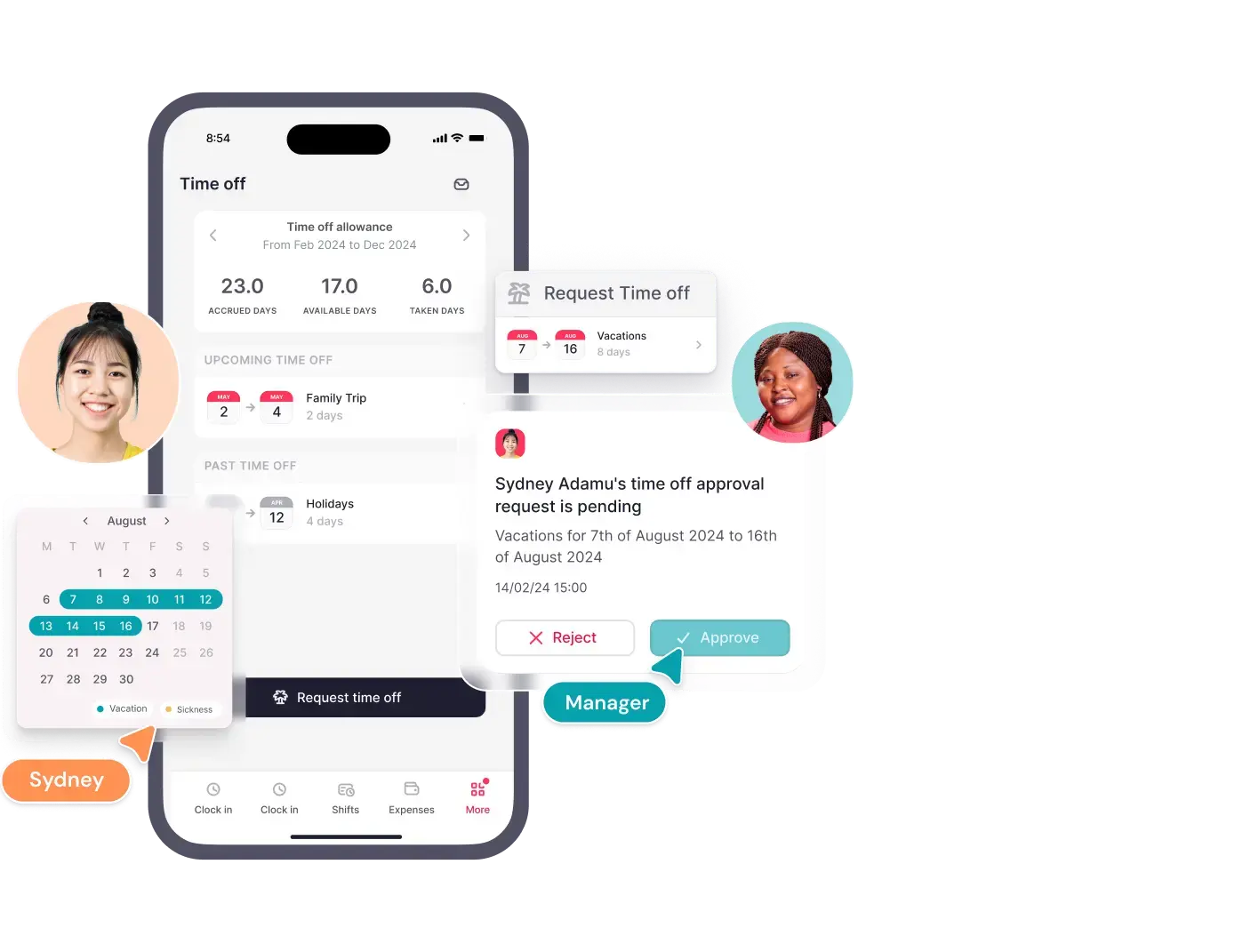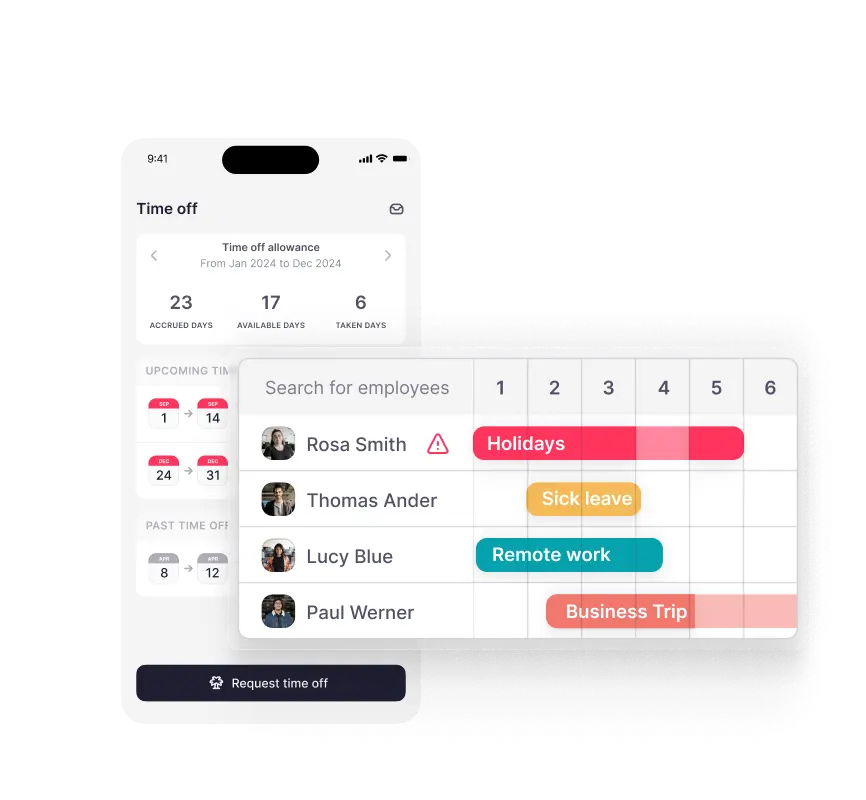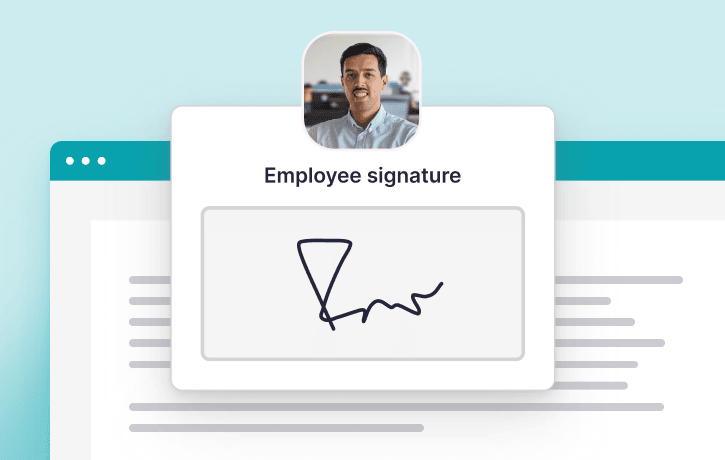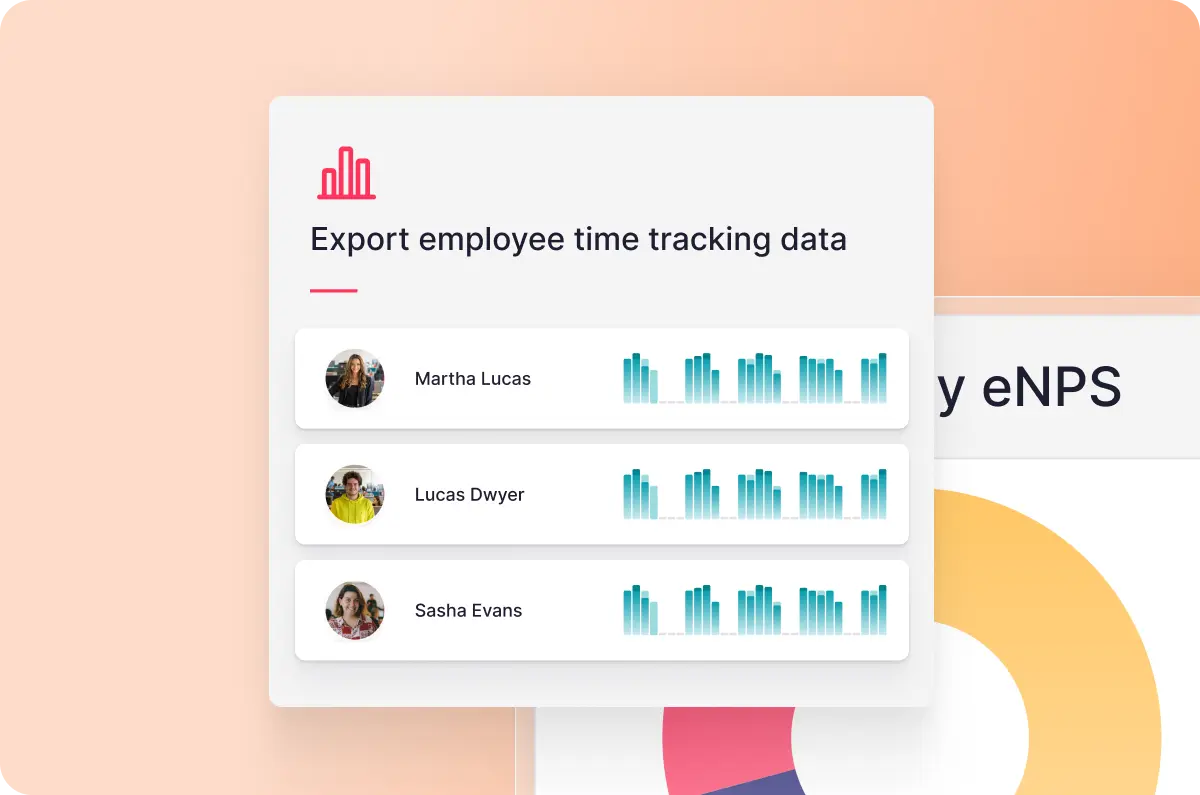Time off management software
Automate your PTO process and get real-time visibility of remaining days off to plan better and avoid stress and hidden costs.







Managing time off can't get easier than this
Coordinate team time off effortlessly with Factorial's dashboard for a complete overview.
Time off calendar
Stay ahead of absences and avoid overlapping days off with a complete team overview
Time off approval
Simplify time-off requests by choosing dates, reasons, and attaching files from your mobile or computer.
Customizable system
Create custom PTO policies and leave approval workflows and export data for a smoother payroll process.
Manage time off from anywhere, anytime
The ability to approve time off requests is at your fingertips.
Manage PTO requests from a centralized platform
Replace email and spreadsheets with an easy-to-use time off calendar.
Create time off policies for your company
Set up your system and update it easily across all teams.
Avoid the hidden cost of unused PTO
Employee absences are more than just an HR compliance issue and how you handle them affects company costs, profitability, company culture, and employee morale.
24%
of employees
don't feel comfortable asking for time off.
55%
of paid time off
goes unused by employees.
$1,898
accrued PTO
owed to employees on average.
Create a system to manage your time off
The majority of workers don't use their PTO days and this can lead to PTO liability for your company. Reminders to use remaining days off won't cut it - you need to create the culture to support your team.

How Factorial helps you manage time off
No matter what industry your business is in, managing time off can be a real challenge. Watch this video to see how Factorial can help you.
Time off management isn't all we offer
Explore our full list of products to find just the thing to fit your business needs.


Frequently Asked Questions About Managing Time Off & Leave Requests
Read all the most commonly asked questions and answers about automating time-off requests and holiday leave software.
What is PTO management?
Paid Time Off (PTO) is a human resource management (HRM) policy that offers employees a pool of bankable hours which can be utilized for various purposes. Also referred to as personal time off, the acronym PTO is commonly used to denote any period during which an employee is compensated while being on leave from work.
What is PTO tracking software?
PTO tracking software like Factorial helps managers keep track of all types of employee leaves. Keep tabs on accepted and approved time off requests, upcoming employee absences, past days off, and rejected absences. This information can help you demonstrate compliance as an employer as well as conduct payroll. Begin by creating time off policies and assigning them to your employees.
How do you manage employee PTO?
Managing employee time-off requests becomes significantly easier by following these straightforward steps: Generally, encourage employees to take time off; however, ensure that there is a well-defined vacation policy established within your company, outlining all the necessary details employees need to know about your time-off policies. Dealing with too many time-off requests can be confusing, but with HR software tools like Factorial, you can digitize vacation requests and streamline the process of approving PTO requests.
What is the best way to track employee time off?
Although there are quite a few ways you can track employee time off, such as doing it on paper and filing the time-off request sheets in the traditional way, this can become very time-consuming and confusing when handling the requests of dozens of employees at the same time. Approving time-off requests via email is more modern but not less confusing. Filling out spreadsheets is again a bit better, but the best and easiest way of tracking employee time off is by far using HR software like Factorial.
Is there a free employee time off tracker?
You can definitely track time off using free alternatives, but is it really worth it in the long run? Time-off tracking software, like Factorial, provides you with a valuable set of tools and saves you more time and money by streamlining your time-off request processes than you would be saving by choosing a free alternative.
What is a good PTO policy for a small business?
Although there’s no federally mandated requirement for small businesses (or large) to offer paid time off, it could be a requirement in your state. The laws regarding paid time off vary from state to state. You should find out about the specific requirements, if any, in yours. That said, PTO is still important in keeping your employees happy and engaged. PTO policies help ensure fair practices throughout your company. To effectively manage time off in your company, the first step is to create time-off policies and assign them to your employees.
Is there an app to keep track of employee PTO?
Yes! Factorial also has an app that allows employees to clock in and clock out at the end of their shift, as well as account for work breaks. By using the app to track their work hours, employees can quickly access their work schedules to see their logged work hours and the remaining time as well.
Do managers have to approve time off?
One of the most important aspects of approving or rejecting time off requests in a company is ensuring that the decision is fair and consistent for all employees. With Factorial you have a centralized system for tracking and managing time off requests. Managers can deny or approve leave requests with notifications sent straight to their email inbox.
How do you manage time off requests from employees?
In Factorial, administrators have the possibility of managing holiday requests at any time. In addition, you can specify which user groups are allowed to access this functionality.
How do I manage my team vacation requests?
Factorial helps you stay compliant with PTO laws and regulations while keeping your business running with the correct staffing. Using the calendar view you can see absences in your team and approve leave requests accordingly.
How do you handle overlapping time off requests?
Using the calendar view you can see upcoming absences in your team and see all scheduled leave days. You will see the days with time off granted displayed in an easy to use team view mode and how those days overlap with other employee leave requests. Use this information to make the correct decision when denying or approving leave requests.
How do I create a PTO policy?
To effectively manage time off in your company, the first step is to create time off policies and assign them to your employees. All the employees in your company are assigned to the default time off policy by default. Time off allowances are counters used to limit the number of days or hours that an employee can be absent from work. In Factorial, there are different types of time off allowances that cater to different specific needs. These allowances are designed to help to manage time off policies in an efficient manner.